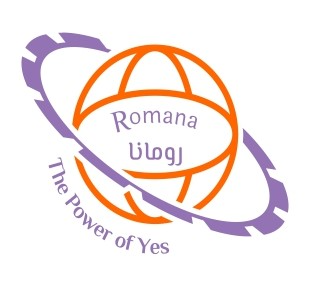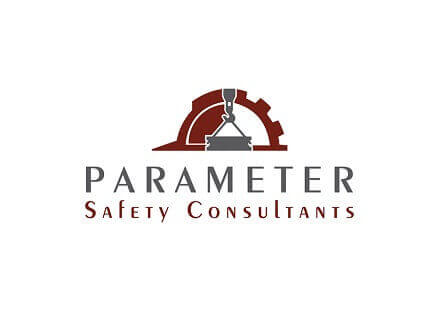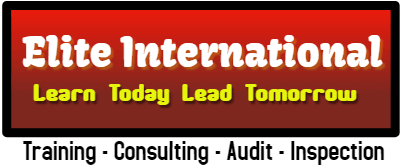Supervisory staff overseeing mechanical works play a key role in ensuring a safe working environment, compliance with safety regulations, and the proper execution of mechanical operations. They are responsible for managing teams, monitoring machinery, enforcing safety protocols, and addressing poten

1. Roles & Responsibilities of Supervisors
Safety Compliance: Supervisors are responsible for ensuring all mechanical operations comply with local, state, and federal regulations, such as OSHA standards and ANSI guidelines.
Oversee Work Practices: They ensure that workers follow safe mechanical practices, including proper handling of equipment, tools, and machinery.
Hazard Prevention: Supervisors are tasked with identifying potential mechanical hazards (e.g., moving parts, heavy machinery) and implementing measures to mitigate risks.
Training & Development: Supervisors ensure that mechanical staff receive proper training and remain up-to-date on safety protocols, procedures, and equipment.
2. Hazard Identification & Risk Assessment
Conduct Risk Assessments: Supervisors should conduct thorough risk assessments for mechanical tasks to identify hazards such as pinch points, falling objects, and exposure to high temperatures or vibration.
Evaluate Machinery Risks: Assess the risk of injury from machinery, considering possible mechanical failures, misuse, or wear and tear of parts.
Workplace Safety Audits: Carry out regular safety audits to identify areas that could pose a risk to the health and safety of employees working with machinery or mechanical tools.
3. Mechanical Safety Regulations & Standards
OSHA Standards: Supervisors should ensure compliance with OSHA 1910 (General Industry Standards) for machinery, including 1910.212 (Machine Guarding) and 1910.147 (Lockout/Tagout).
ANSI & ASME Guidelines: Ensure that mechanical operations follow industry standards like those set by the American National Standards Institute (ANSI) and the American Society of Mechanical Engineers (ASME).
Lockout/Tagout (LOTO): Supervisors must ensure the proper implementation of the LOTO procedure to de-energize equipment before maintenance or repair work.
4. Safe Work Practices & Procedures
Standard Operating Procedures (SOPs): Develop and enforce SOPs for mechanical tasks, ensuring workers use the correct tools and follow the safest practices for each job.
Permit-to-Work Systems: Supervisors should oversee the implementation of permit-to-work systems for high-risk mechanical operations to ensure all precautions are in place before work begins.
Machine Guarding: Ensure that machinery and equipment are equipped with proper safety guards to prevent accidental injuries from moving parts.
PPE Requirements: Supervisors must ensure that workers are using appropriate personal protective equipment (PPE), such as gloves, safety glasses, hearing protection, and steel-toed boots.
5. Equipment Maintenance & Inspection
Routine Inspections: Supervisors are responsible for ensuring that mechanical equipment, tools, and machinery undergo regular inspections and preventive maintenance to avoid breakdowns and safety issues.
Maintenance Records: Maintain accurate records of all equipment inspections, repairs, and maintenance activities. These records help ensure that all machinery is in safe working order and ready for operation.
Tool Safety: Ensure that tools are properly maintained, free from defects, and used appropriately for their intended tasks.
6. Emergency Procedures & Response
Emergency Response Plan: Develop an emergency response plan to address potential mechanical accidents, such as equipment malfunctions, fires, or injuries. Ensure all staff know how to respond to emergencies promptly.
First Aid Training: Supervisors should ensure that key staff members are trained in first aid and CPR, especially for injuries related to mechanical equipment, such as cuts, burns, or broken bones.
Fire Safety: Implement proper fire safety protocols, including the use of fire extinguishers, regular fire drills, and safe handling of flammable materials.
Evacuation Routes: Ensure the worksite has clearly marked evacuation routes, and conduct regular drills so all staff can exit safely in case of an emergency.
7. Safe Material Handling
Heavy Lifting & Equipment: Supervisors must ensure that workers use proper lifting techniques when handling heavy machinery and mechanical parts. They should also ensure that mechanical equipment like cranes, hoists, or forklifts are used safely.
Transporting Materials: Ensure safe handling and transportation of materials, tools, and equipment, including securing loads and using proper lifting gear (e.g., slings, hoists).
Handling Hazardous Materials: Supervisors must ensure that workers handling hazardous materials, such as chemicals, lubricants, or solvents, follow all safety guidelines, including correct labeling, storage, and disposal procedures.
8. Environmental Health & Safety
Noise Control: Mechanical worksites often have high noise levels, which can lead to hearing damage. Supervisors should implement noise control measures such as ear protection and limit exposure time to excessive noise.
Air Quality: Ensure that workers are protected from harmful fumes or dust created during mechanical processes. Use ventilation systems or dust extraction systems where necessary.
Vibration Hazards: Use anti-vibration tools and equipment to minimize workers' exposure to vibration, which can lead to Hand-Arm Vibration Syndrome (HAVS) and other musculoskeletal disorders.
9. Communication & Coordination
Daily Toolbox Talks: Supervisors should conduct regular toolbox talks to discuss potential hazards, safety updates, and changes in work procedures.
Team Communication: Ensure that workers understand the tasks at hand and are aware of any potential hazards. Encourage open communication to ensure safety concerns are addressed promptly.
Clear Signage: Post safety signs and instructions in visible locations around the worksite, such as warning signs, machine status indicators, and emergency evacuation routes.
10. Certification & Refresher Training
Initial Certification: Supervisory staff must complete mechanical safety training covering safety protocols, equipment operation, maintenance, and emergency response.
Refresher Training: Supervisors should participate in annual or bi-annual refresher training to stay current on mechanical safety practices, regulatory changes, and new technologies.
Continuous Development: Supervisors should engage in continuous learning to stay up-to-date with new machinery, tools, and safety techniques.
In today’s dynamic business environment, maintaining compliance, safety, and quality is essential for success. Romana Skills Training LLC is a KHDA & Dubai Municipality-approved training and consultancy provider dedicated to helping businesses enhance safety standards, meet regulatory requirements, and drive operational excellence.
We offer expert-led training and consulting services in Food Safety (HACCP, ISO 22000), Health & Safety (HSE), Quality Management, and Environmental Compliance, ensuring that organizations across various industries—food manufacturing, hospitality, healthcare, construction, and more—achieve full regulatory compliance and operational efficiency.
With a strong focus on tailored solutions, we empower businesses with practical knowledge and strategies that reduce risks, improve workforce competency, and enhance overall performance. Our commitment to excellence and continuous improvement has helped numerous clients meet Dubai Municipality, ISO, and global safety standards successfully.
Partner with Romana today and unlock excellence in safety and compliance!
(Institute Review)
55 years ago(Institute Review)
55 years ago
This training will teach you how to avoid underground services and making sure that nearby structures are not undermined by using safe digging practices and digging away from them.

This qualification is based on the knowledge and skills to help you in a senior role taking care of the health and safety practices and policy in an organization.

This 'Scaffolding Inspection' training will provide the delegates with adequate knowledge and understanding of health and safety measures in relation to Scaffolding.

Level 3 Award in Health & Safety training is aimed at improving the awareness level regarding health safety and works towards promoting a safety culture by instructing the candidates about causes of accidents, control measures, risk assessme

This is a highly interactive course and will involve tutorials, discussions, exercises, case study, and workshops to give you the knowledge and understanding of the need to control hazardous substances at work and home.
© 2025 www.coursetakers.ae All Rights Reserved. Terms and Conditions of use | Privacy Policy